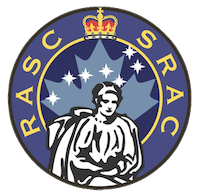Robert Hanbury Brown, AC FRS (31 August 1916 – 16 January 2002) was a British astronomer and physicist born in Aruvankadu, India. He made notable contributions to the development of radar and he later conducted pioneering work in the field of radio astronomy. He was rumoured to have been the original radar scientist who inspired the term boffin during World War II.
After attending Tonbridge School, Brown studied electrical engineering at the University of London, from where he received a Master's degree in telecommunication in 1935. From 1936 to 1942 he worked for the Air Ministry, where he helped to develop radar. He then joined the Tizard Mission and spent 3 years in Washington, D.C. to work with the Combined Research Group at the Naval Research Laboratory. After the end of the war he returned to Britain and rejoined the scientific civil service. A consultancy that had been set up by Sir Robert Watson-Watt, the father of radar, offered more interesting prospects for the conversion of wartime developments into peacetime technologies. Hanbury Brown allowed himself to be recruited and worked as a consulting engineer until Watson-Watt decided to move the firm to Canada. After pondering a number of career possibilities, he returned to academia in the autumn of 1949, when he joined Bernard Lovell's radio astronomy group at the University of Manchester.
At the Jodrell Bank Observatory of Manchester University, Hanbury Brown developed some of the earliest devices to be used in radio astronomy. He worked closely with the mathematician Richard Q. Twiss on the development of, amongst other things, radio intensity interferometry and the first optical stellar intensity interferometer, using army surplus searchlights as infinity focused photon collectors. Using this instrument he became the first person to measure the angular diameter of the star Sirius. In 1962 he relocated to New South Wales in Australia to oversee the construction of the Narrabri Stellar Intensity Interferometer. Two years into the task he resigned from the chair that had been created for him at Manchester and took up an appointment at the University of Sydney. After the Narrabri interferometer was decommissioned in 1974, having completed its task (to measure the angular diameter of 32 main sequence stars), he stayed on in Sydney to design a next generation instrument. This was not to be another intensity interferometer, but a modernised Michelson interferometer. As Hanbury Brown himself was keen to emphasize, the development of this technologically exceedingly demanding instrument—the Sydney University Stellar Interferometer (SUSI) -- became essentially the project of his colleague John Davis (1932–2010). The SUSI opened in 1991.
In March, 1960 he was elected a Fellow of the Royal Society of London and in 1971 was awarded their Hughes Medal for " his efforts in developing the optical stellar intensity interferometer and for his observations of Spica". In 1968, he received the Eddington Medal jointly with Twiss. He also won the Thomas Ranken Lyle Medal of the Australian Academy of Science in 1972. In 1982 he was named President of the International Astronomical Union, a title he retained until the end of his term in 1985. In 1986 he was made a Companion in the Order of Australia. He was awarded the Albert A. Michelson Medal of the Franklin Institute in 1982, jointly with Richard Q. Twiss. Brown died in Andover, Hampshire in 2002.
He wrote an autobiographical account of the development of airborne and ground based radar, and his subsequent work on radio astronomy. Since he was rumoured to have been the original boffin who inspired the term, he called these recollections Boffin: A Personal Story of the Early Days of Radar, Radio Astronomy and Quantum Optics.
Robert Hanbury Brown was nominated as an Honorary Member of the Royal Astronomical Society of Canada on 1987-01-31.

